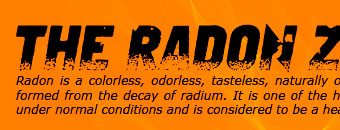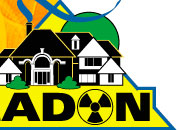10. How does radon get into a home?
You can’t see radon, but it’s not hard to find out if you have a radon problem in your home. All you need to do is test for radon. Testing is easy and should only take a few minutes of your time.
Radon is a radioactive gas. It comes from the natural decay of uranium that is found in nearly all soils. It typically moves up through the ground to the air above and into your home through cracks and other holes in the foundation. Your home traps radon inside, where it can build up. Any home may have a radon problem. This means new and old homes, wellsealed and drafty homes, and homes with or without basements.
Nearly 1 out of every 15 homes in the U.S. is estimated to have elevated radon levels. Elevated levels of radon gas have been found in homes in your state. While radon problems may be more common in some areas, any home may have a problem. The only way to know about your home is to test.
RADON GETS IN THROUGH:
1. Cracks in solid floors.
2. Construction joints.
3. Cracks in walls.
4. Gaps in suspended floors.
5. Gaps around service pipes.
6. Cavities inside walls.
7. The water supply.





